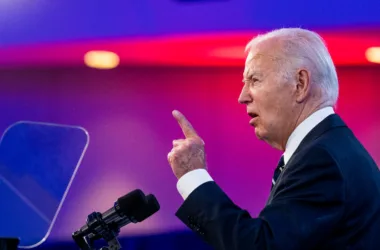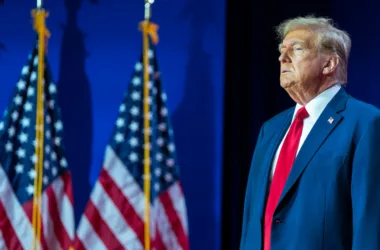The Education Department approved millions of applications for President Biden’s now-defunct student loan forgiveness program without making sure the borrowers were eligible, Congress’ chief watchdog said in a report released Thursday.
Two years after fraudsters stole hundreds of billions of dollars from COVID-19 pandemic assistance programs based on self-reporting of eligibility, the Biden administration seemed poised to make the same mistake, the Government Accountability Office concluded.
GAO said the department was ready to approve more than 2 million applications that relied on self-reported incomes — the sort of model that led to the pandemic fraud losses.
The Supreme Court effectively shut down the forgiveness program in June with a ruling that Mr. Biden’s plan stretched the law beyond its breaking point.
The Department of Education was already poised to pay out on 2 million automatically approved applications based purely on borrowers’ self-reported income, GAO said.
“Education sought to expedite approvals for millions of borrowers by approving them automatically, but relied solely on self-reported data for more than 2 million of these borrowers,” wrote Melissa Emrey-Arras and Seto J. Bagdoyan, GAO’s leads on the audit. “By not addressing the risks of self-reported data, Education left the door open to the possibility of some ineligible borrowers receiving relief based on fraudulent data.”
It’s known as the pay-and-chase model — when the government shovels cash out the door and then tries to track down and claw back bogus payments — and the pandemic left it deeply discredited.
News that the Education Department was planning another pay-and-chase plan two years after pandemic relief fraud spawned outrage on Capitol Hill.
“Rather than intervening to mitigate instances of fraud from students who applied for loan forgiveness, the department leaned back in its chair, kicked its feet up and took a nap,” said Rep. Virginia Foxx, North Carolina Republican and chairwoman of the House Education and the Workforce Committee.
Sen. Bill Cassidy of Louisiana, the top Republican on the Senate Health, Education, Labor and Pensions Committee, called the Education Department’s approach “unconscionable.”
The Education Department said it structured the program to allocate relief with the least burden on borrowers. Officials figured the program was at low risk of fraud, particularly because they weren’t sending payments but modifying loan balances.
With those safeguards, the department figured it would have a fraud rate of less than 1% even in “the most unlikely worst-case scenario,” the department told GAO.
GAO said that still amounted to a lot of fraud.
“Put another way, even if the program had a relatively low risk of providing debt relief to borrowers engaging in fraud, as asserted by Education, the scale of the program — with the possibility of an estimated $430 billion of relief going to over 31 million borrowers — rendered it inherently at risk for fraud and necessitated effective fraud risk management,” the auditors said.
Since the Supreme Court shuttered Mr. Biden’s forgiveness program, the administration is trying for a do-over, the GAO said. The Education Department has announced that it is working on a slimmed-down forgiveness program.
The GAO said the department should learn from its first go-round and do more to combat fraud.
The department said it was working to fill in some fraud risk gaps when the courts stepped in and shut down the program.
“This process had been ongoing and, like much of the student loan debt relief program, was still evolving and being implemented when activity on this program was suspended due to court orders,” said Richard Cordray, the department’s chief operating officer for federal student aid.
GAO acknowledged that the program was a work in progress and said that was part of the problem.
“At that time, Education had already approved over 16 million borrowers for relief,” the agency said.
The GAO’s report stirred another issue.
The auditors said the version released Thursday was slimmed down from an original report because the Education Department insisted that some of what GAO found was too sensitive to be released to the public. The information was not classified but was deemed “controlled.”
Senate Republicans who reviewed the original report lodged an official protest. They said the only secrets the administration was protecting were more information about how badly the forgiveness program was operated.
Mr. Cassidy said GAO should resist rather than capitulate to agency secrecy requests.
“GAO staff told my office that they did not believe these designations were warranted; however, GAO agreed to make at least some of the requested changes to the public release version of its report anyway,” the senator said.
He said GAO delayed another report concerning whether the student loan forgiveness was subject to the Congressional Review Act — a sort of congressional veto over administration actions. Mr. Cassidy said GAO waited nearly six months to issue its determination because the Education Department stonewalled on cooperating.
Spokesman Charles Young said the GAO can’t override agencies’ final decisions on classification. It will negotiate to release public versions of reports with classification but must ultimately follow whatever controls the originating agency designated.
Mr. Cassidy, in his letter to GAO, suggested the law may need to be changed.









